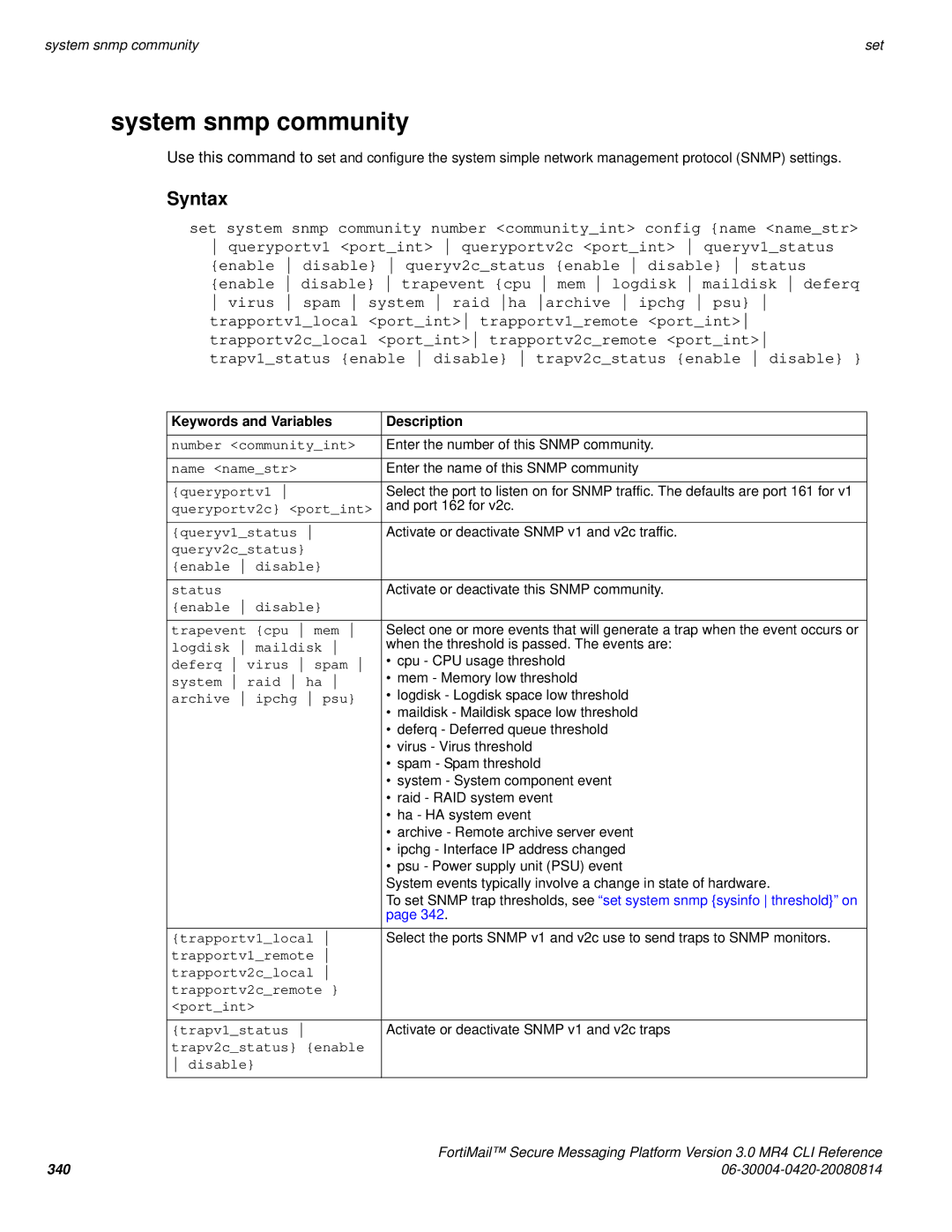
system snmp community | set |
system snmp community
Use this command to set and configure the system simple network management protocol (SNMP) settings.
Syntax
set system snmp community number <community_int> config {name <name_str> queryportv1 <port_int> queryportv2c <port_int> queryv1_status {enable disable} queryv2c_status {enable disable} status {enable disable} trapevent {cpu mem logdisk maildisk deferq virus spam system raid ha archive ipchg psu} trapportv1_local <port_int> trapportv1_remote <port_int> trapportv2c_local <port_int> trapportv2c_remote <port_int> trapv1_status {enable disable} trapv2c_status {enable disable} }
Keywords and Variables | Description |
|
|
number <community_int> | Enter the number of this SNMP community. |
name <name_str> | Enter the name of this SNMP community |
{queryportv1 | Select the port to listen on for SNMP traffic. The defaults are port 161 for v1 |
queryportv2c} <port_int> | and port 162 for v2c. |
{queryv1_status | Activate or deactivate SNMP v1 and v2c traffic. |
queryv2c_status} |
|
{enable disable} |
|
status | Activate or deactivate this SNMP community. |
{enable disable} |
|
trapevent {cpu mem | Select one or more events that will generate a trap when the event occurs or |
logdisk maildisk | when the threshold is passed. The events are: |
deferq virus spam | • cpu - CPU usage threshold |
system raid ha | • mem - Memory low threshold |
archive ipchg psu} | • logdisk - Logdisk space low threshold |
| • maildisk - Maildisk space low threshold |
| • deferq - Deferred queue threshold |
| • virus - Virus threshold |
| • spam - Spam threshold |
| • system - System component event |
| • raid - RAID system event |
| • ha - HA system event |
| • archive - Remote archive server event |
| • ipchg - Interface IP address changed |
| • psu - Power supply unit (PSU) event |
| System events typically involve a change in state of hardware. |
| To set SNMP trap thresholds, see “set system snmp {sysinfo threshold}” on |
| page 342. |
{trapportv1_local | Select the ports SNMP v1 and v2c use to send traps to SNMP monitors. |
trapportv1_remote |
|
trapportv2c_local |
|
trapportv2c_remote } |
|
<port_int> |
|
{trapv1_status | Activate or deactivate SNMP v1 and v2c traps |
trapv2c_status} {enable |
|
disable} |
|
| FortiMail™ Secure Messaging Platform Version 3.0 MR4 CLI Reference |
340 |
